Patterns are back. To be honest, they were never gone, but we recently saw the great comeback of Louis Vuitton’s emblematic Damier check in a pixilated camouflage version by superstar Pharrell William as their new men’s creative director, just after the same brand obsessed us with Yayoi Kusama dots. We fell in love again with the regular pattern that inspired so many great fashion designers over the years.
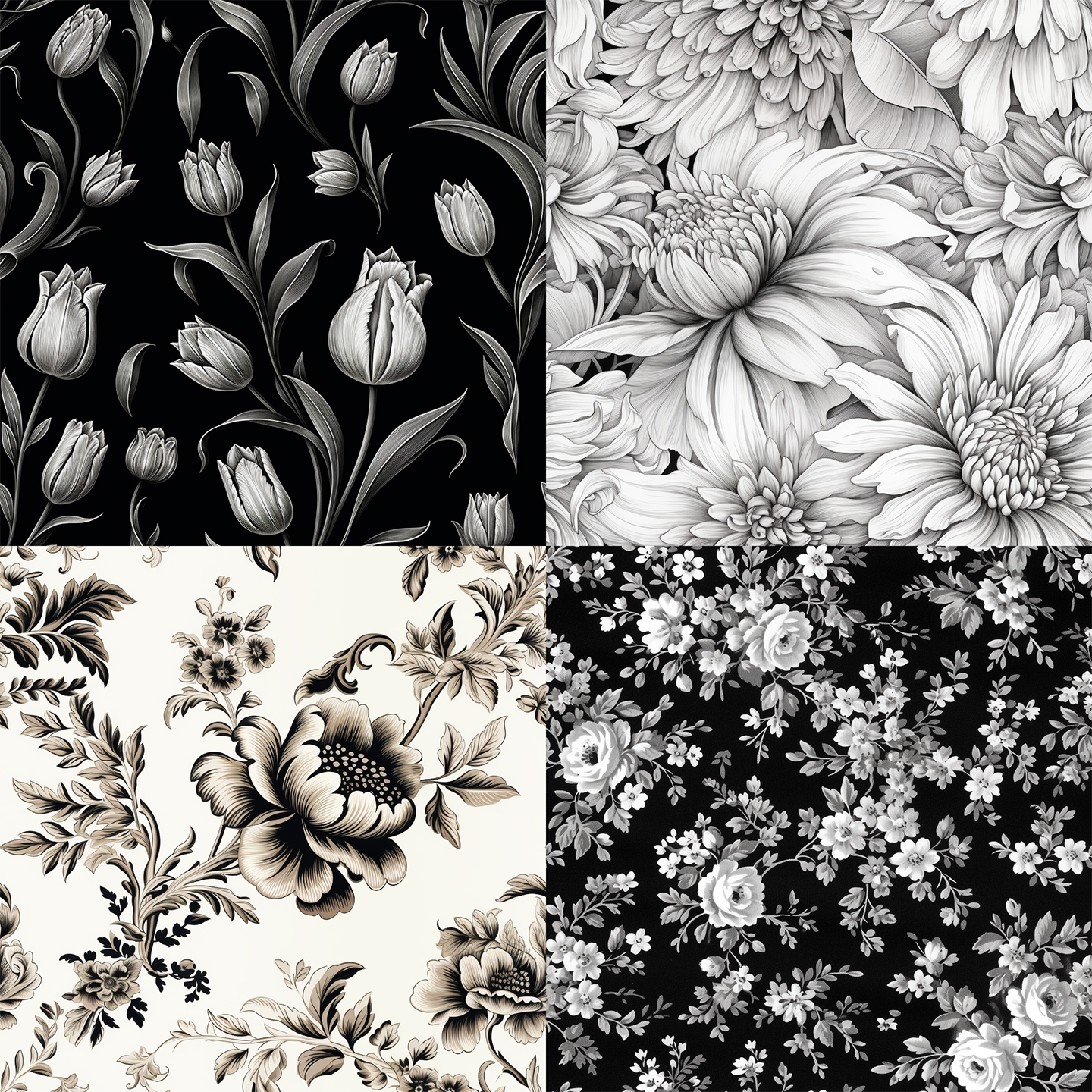
Let's delve into the world of AI. Here is a floral texture created with MidJourney. Courtesy of the author
Pucci’s signature kaleidoscopic patterns decorated scarves in the Fifties, and Missoni zigzag arrived in the Sixties. We can go back in time to find houndstooth, designed more than thousands of years ago as one of the more ancient tartan types, loved by so many brands like Balenciaga, Alexander McQueen, Chanel and most of all, Christian Dior that used it for his first fragrances Diorissimo and Miss Dior in 1950.
The Y-shaped Goyardine canvas was created in 1892, around the same time as the LV Monogram. Gianni Versace gave the evergreen Barocco style his personal twist in the Eighties. Dolce & Gabbana lace pattern is a staple of the brand. Plus, there are many iconic branded patterns like Gucci GG Diamante and the Dior Oblique, among others.
Why AI for generating patterns?
In the ancient pre-digital era, many designers used to copy by hand anything to generate patterns, from heraldic crests to the structure of petals and leaves, intricate railings and the shape of the waves, the fleur-de-lis used by French monarchs and Victorian stripes to the Army’s camouflage motif.
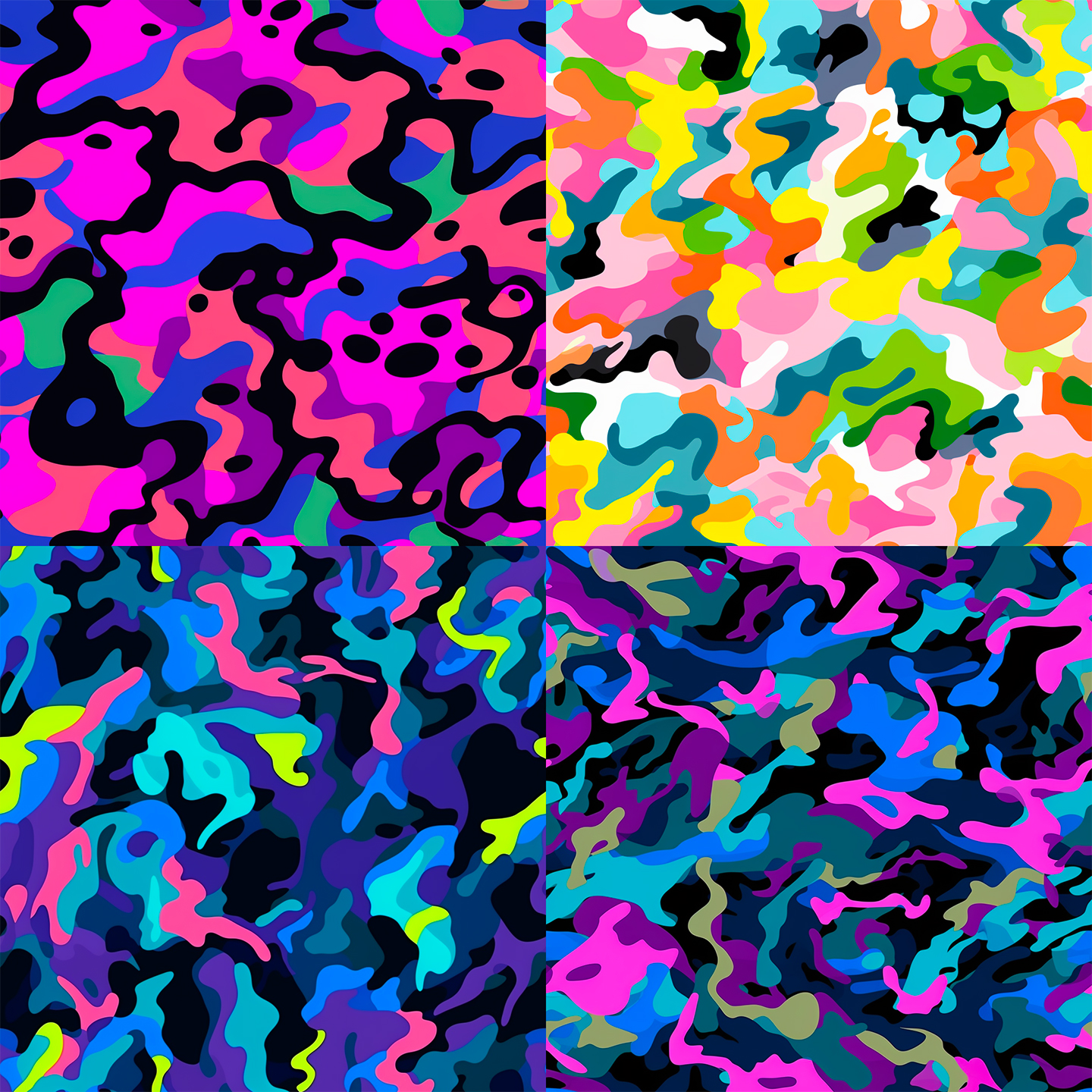
Midjourney's prompts lets you generate stunning camouflage patterns. Courtesy of the author
Now any illustration can be turned into a replicable pattern in a few seconds manually if you are familiar with graphic design programs or pattern generator software. These patterns can then be printed onto fabrics to create beautiful garments.
AI can be a powerful tool when designing patterns to print on fabrics and garments. Having experimented with this innovative tool ourselves, we can confidently say it does empower your creative potential.
Pros and cons
Think about AI tools as if they were your “minions”: they can be as smart and creative as you, performing and making variations on your original ideas. Or they can be a source of inspiration. You decide if you want to use them to brainstorm or to recreate something you have in mind.
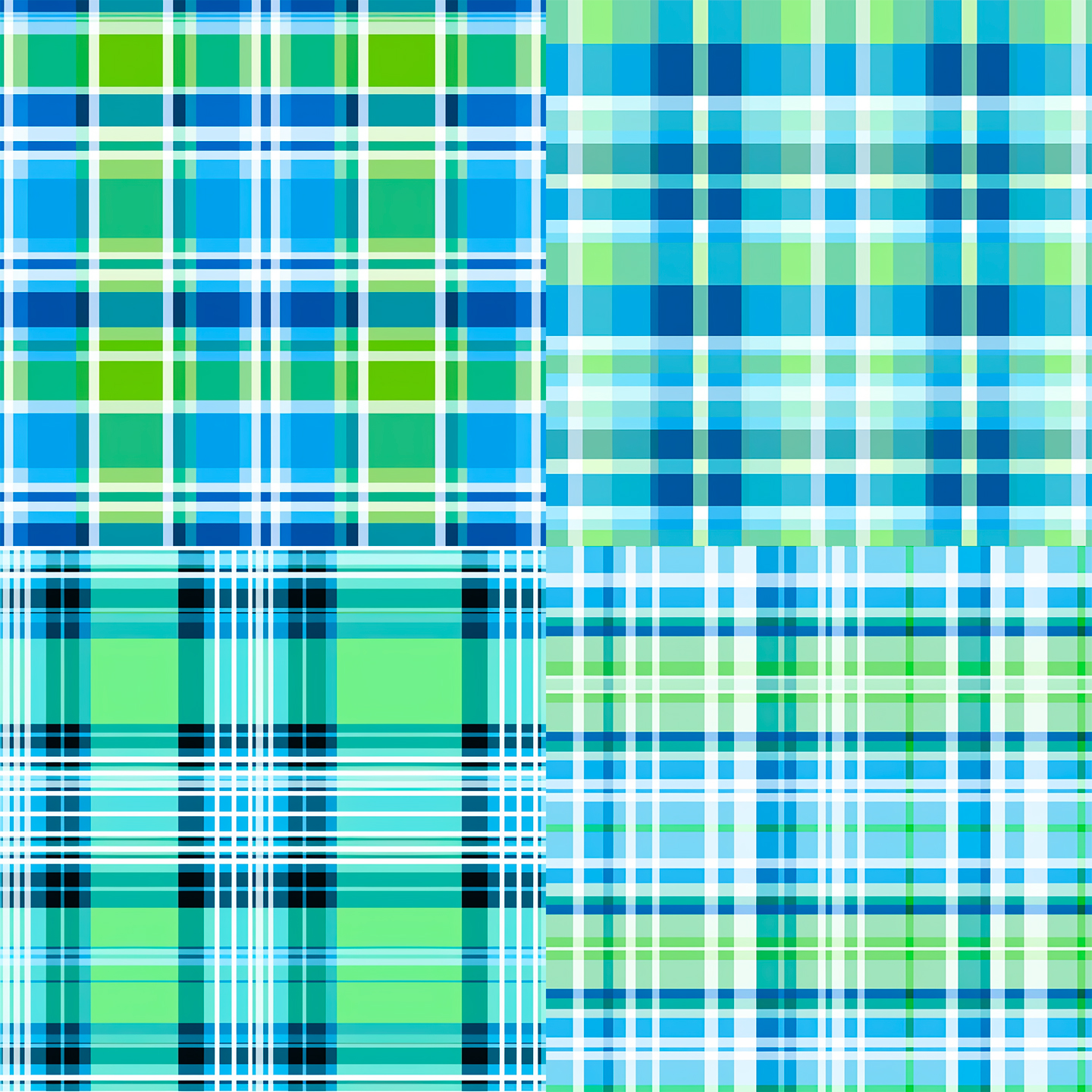
Can Midjourney make patterns? Of course, as dedicated parameters generate images that can be used as repeating tiles to create patterns for fabrics. Courtesy of the author
Most AI tools allow you to make a precise pattern and apply it to a garment or use it to dress up your mannequins. Remember that “precise” is a vague concept in AI because most tools are at an early alpha or beta stage, and the result is linked to your ability as a prompt designer. Ready to try? Let’s go.
Prompt design like a pro
Mastering the already lesser-known art of prompting is key when using AI tools for pattern inspiration.
You must feed any AI text-to-image system with precise details about what you have in mind: is it floral or graphic? Do you like it sleek and minimal or baroque? What colour palette do you prefer? What about textures? You decide and tell the AI tool. If you leave out any details, intentionally or not, it may fill them in on its own.
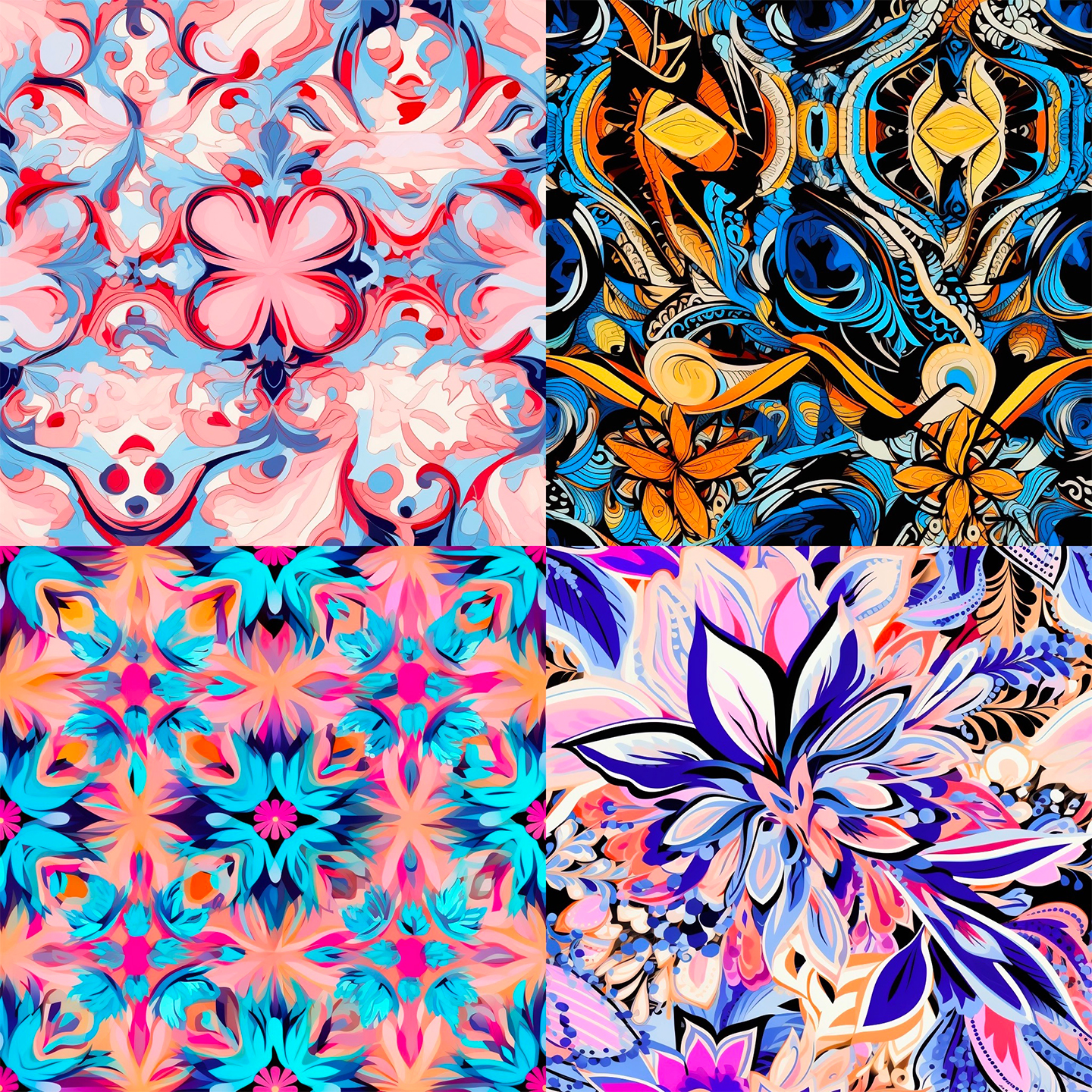
A jacquard-inspired pattern created with MidJourney. Courtesy of the author
Using precise fashion terms like herringbone, jacquard, and gingham, followed by “print” or “pattern”, gives you accurate results. Same for words like floral, geometric, and striped. Avoid ambiguous terms like harlequin (that can refer to the eponymous character) or damask (it’s also a city name).
Turn any design into a tile
Try this process with Midjourney: design your print, upload it to Midjourney and use the --tile parameter to generate a single tile, then use Seamless Texture Checker to repeat it endlessly.
Blend it in Midjourney with a picture of your garment design in neutral colours or outlines or worn by a model. Prepare yourself to be amazed by unexpected outcomes: the results sometimes are a little off, but sometimes they make sense. It’s up to you to decide what versions are worthy of upscaling.
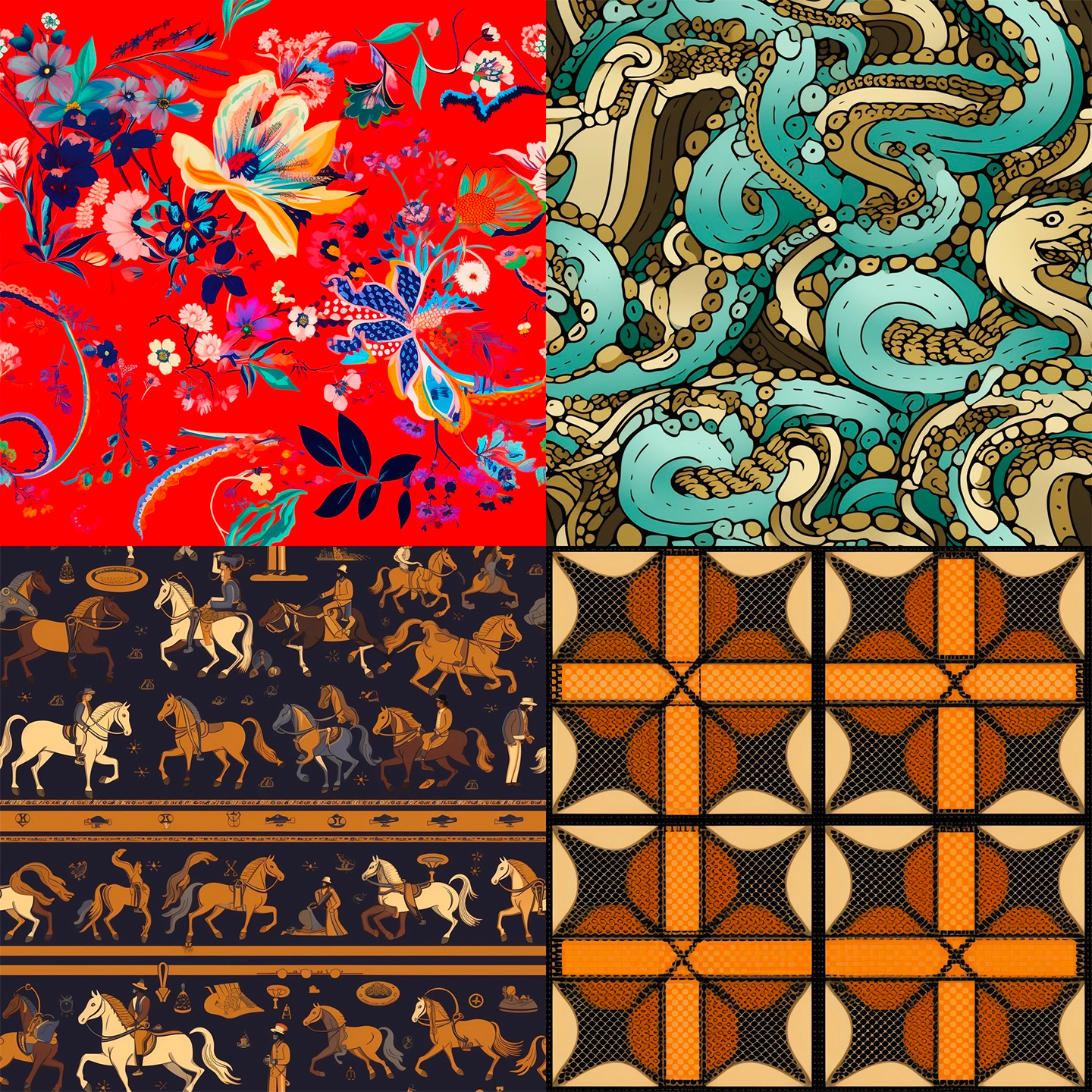
A pattern inspired by Hermès iconic motifs, created with MidJourney
Other than MJ, Dall-E and Starryai are also good for generating symmetrical and repetitive structures. Remember that those tools are never precise in making dots, squares, or checks, but they are perfect for creating more intricate abstract figures, like patterns with natural elements like animals and plants.
Use specific AI tools for patterns
Need some inspo for your patterns? Try patterned.ai to generate royalty-free high-res and SVG patterns. It allows you to manage details, colours and every creative aspect. You can use it for free for your school projects, and there is a waiting list for Business use.
Pattern Cafe gives you 4 patterns for free and 1 AI prompt to experiment with. If you’re happy with the outcome, generating more is easy and affordable, starting from 5 dollars for 50 patterns. It’s important to note that if you begin with your own design, you will own the rights to any images or illustrations used.
Tips & tricks for pattern prompt design
- When it comes to colours, you can be very specific. Most AI platforms process a “tartan pattern sky blue and lime green” text input in a literal way. It’s perfect to achieve your desired result quickly and accurately.
- Add the --tile parameter in Midjourney to generate a ready-to-upscale single tile to be replicated endlessly in a pattern. In this case, the prompt is: “Camouflage pattern in neon colours.”
- Using precise terms and adjectives in your prompting allows better results. In this case “jacquard kaleidoscopic pattern” is generating a close result. You can use it to brainstorm ideas to rework creatively.
- When taking inspiration from existing styles, you may want to include the designer’s name as a reference in the prompt. Beware of unintentional plagiarism; for example, a “Hermes foulard print” prompt will generate something derivative that lacks originality.
- A simple prompt, “floral black and white pattern”, generates different pattern styles. Add the Midjourney --chaos parameter to add more variety to the four standard results.

